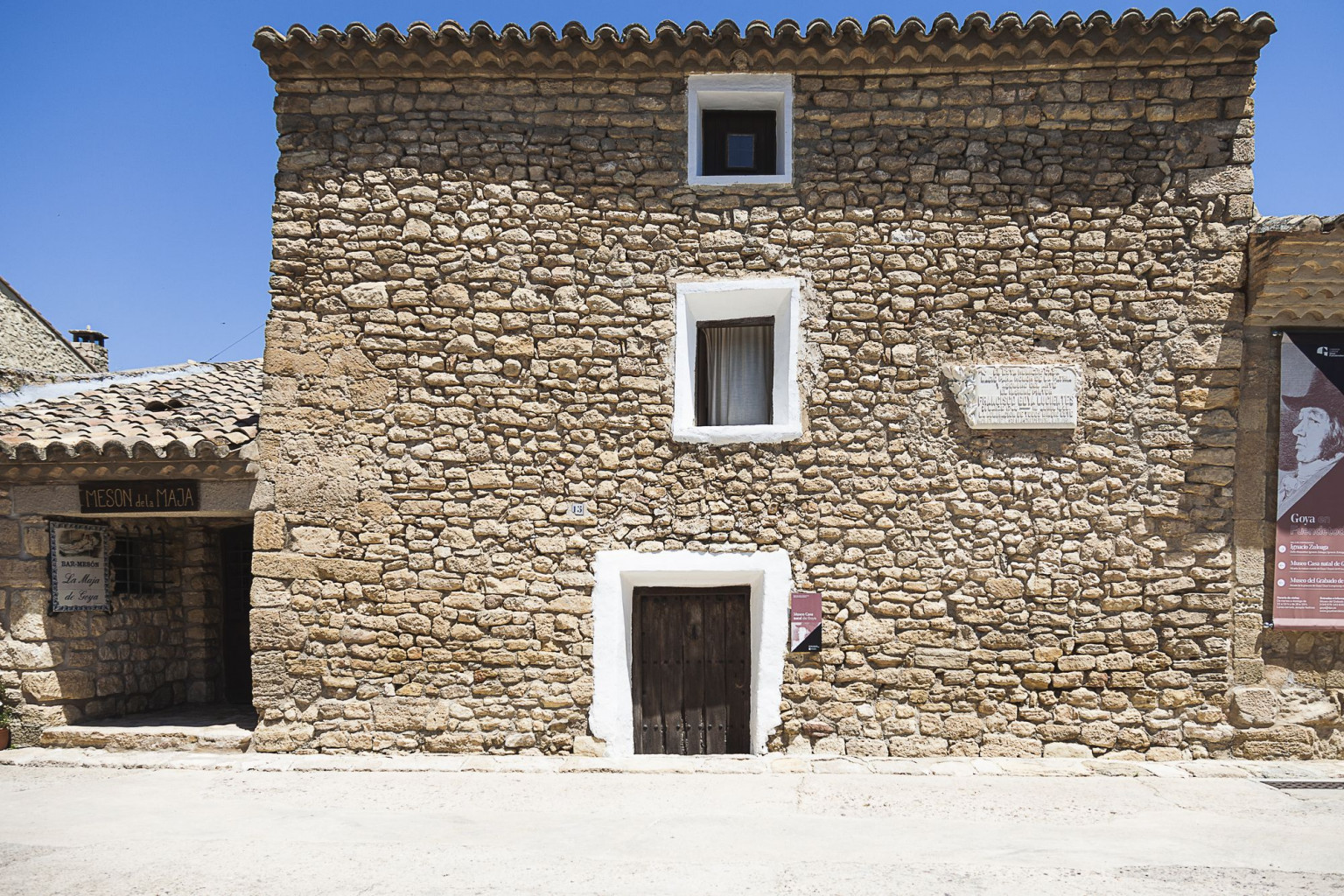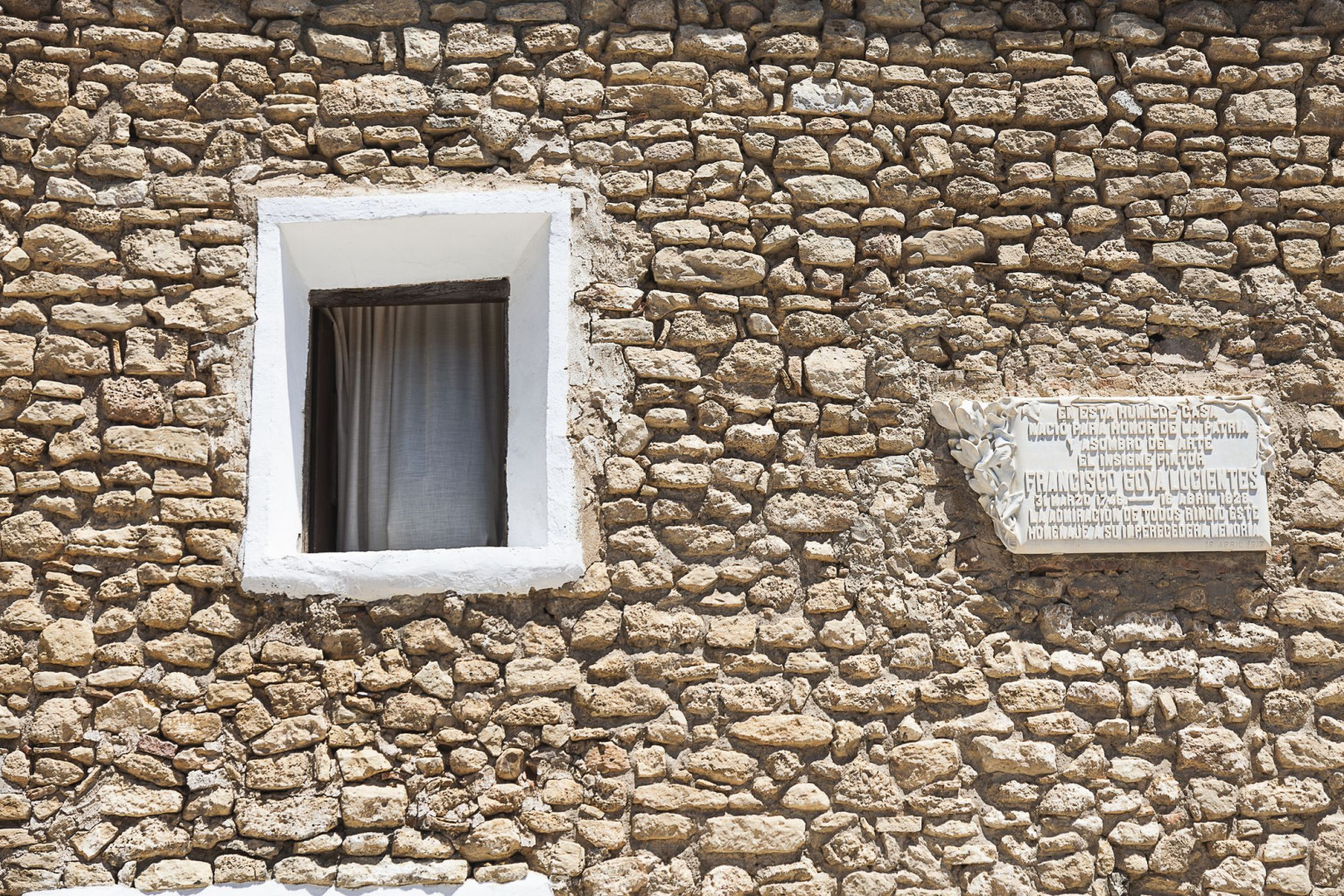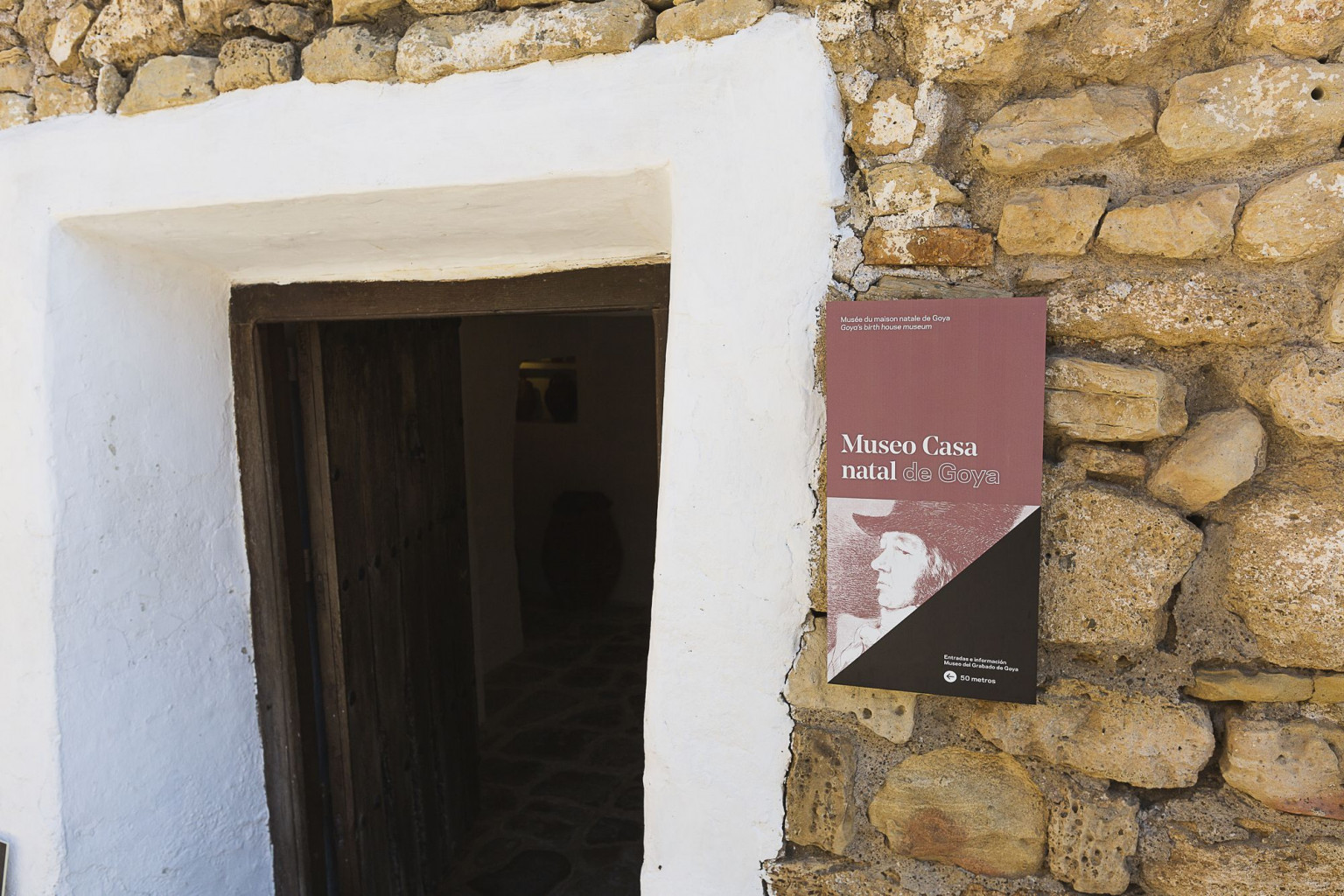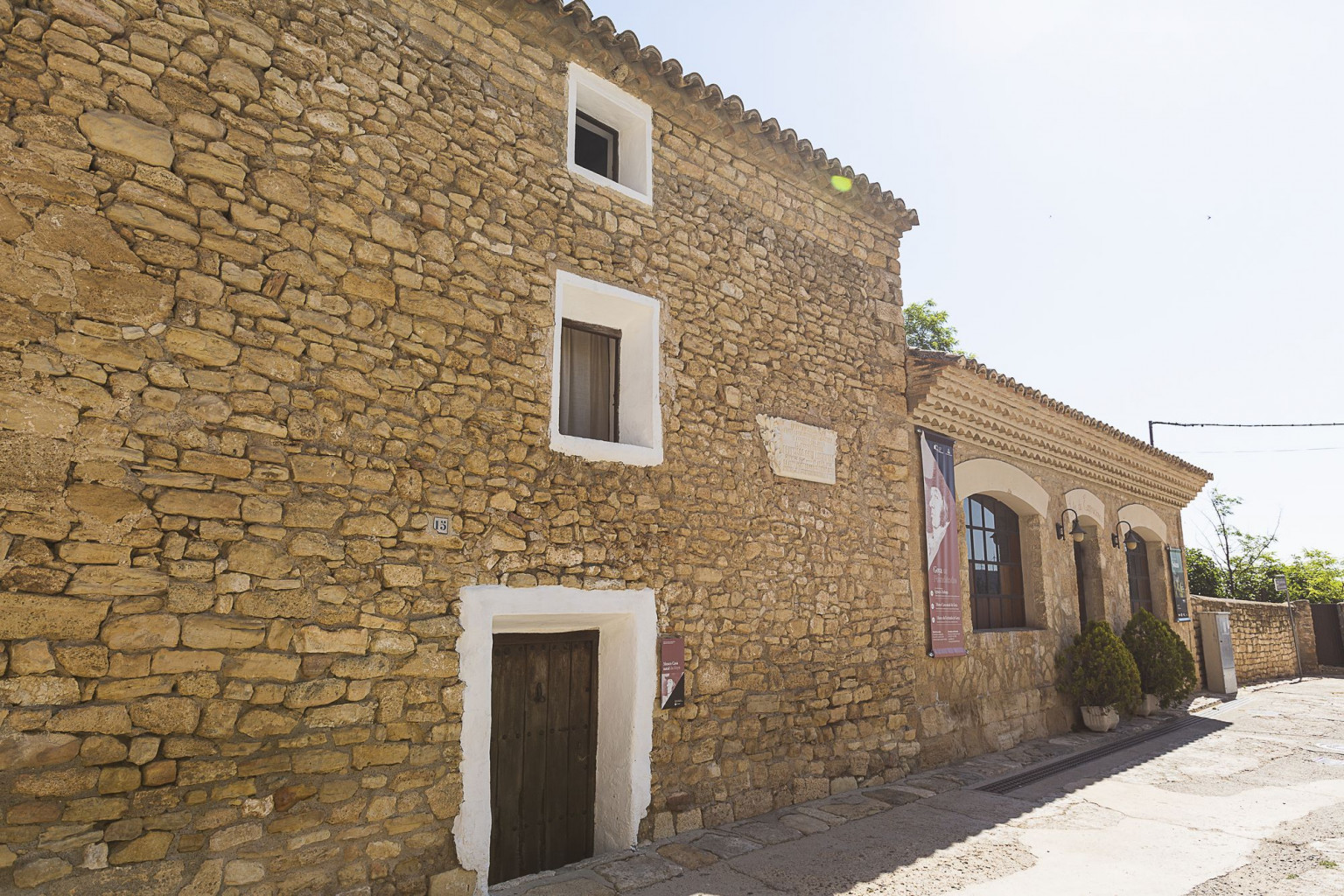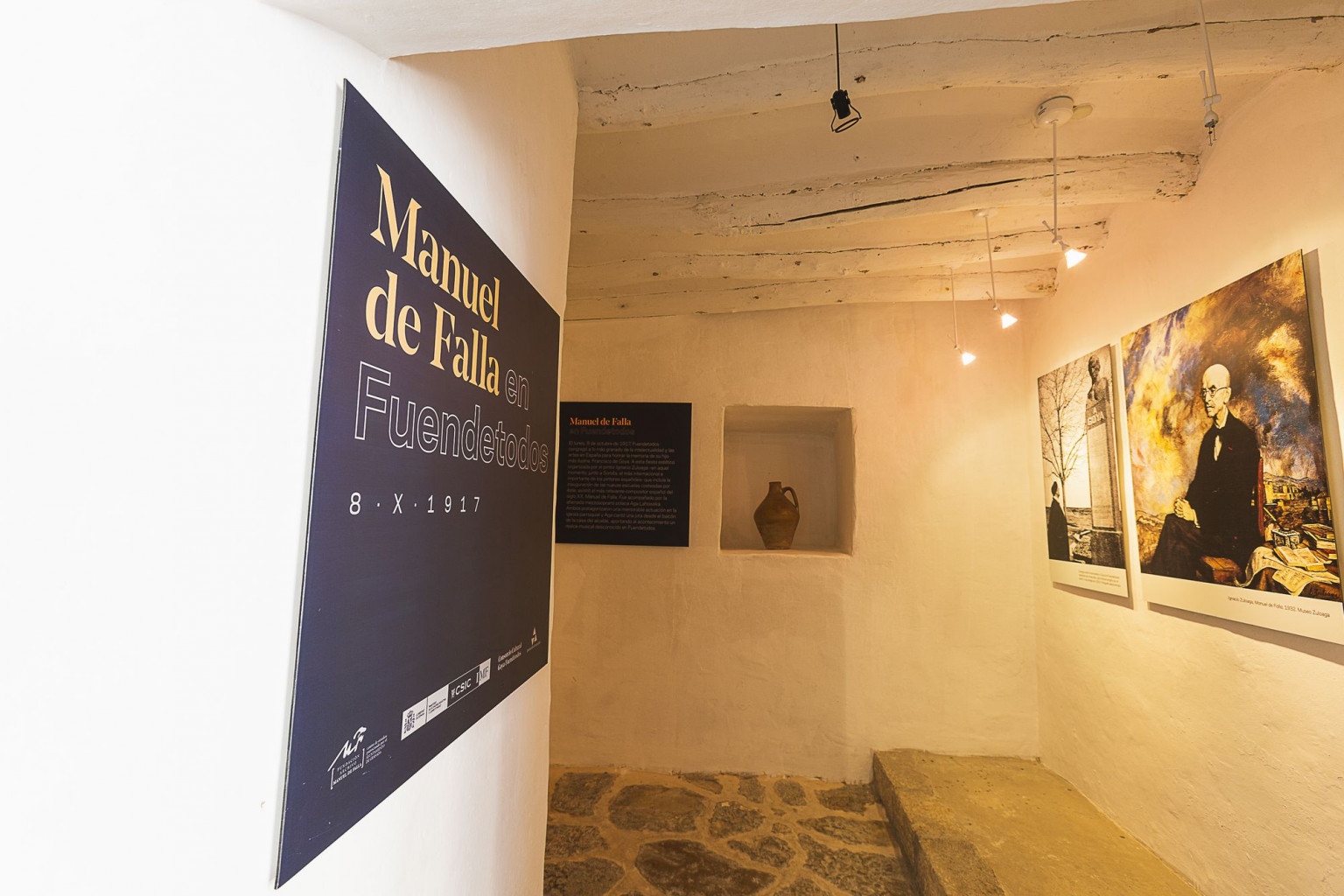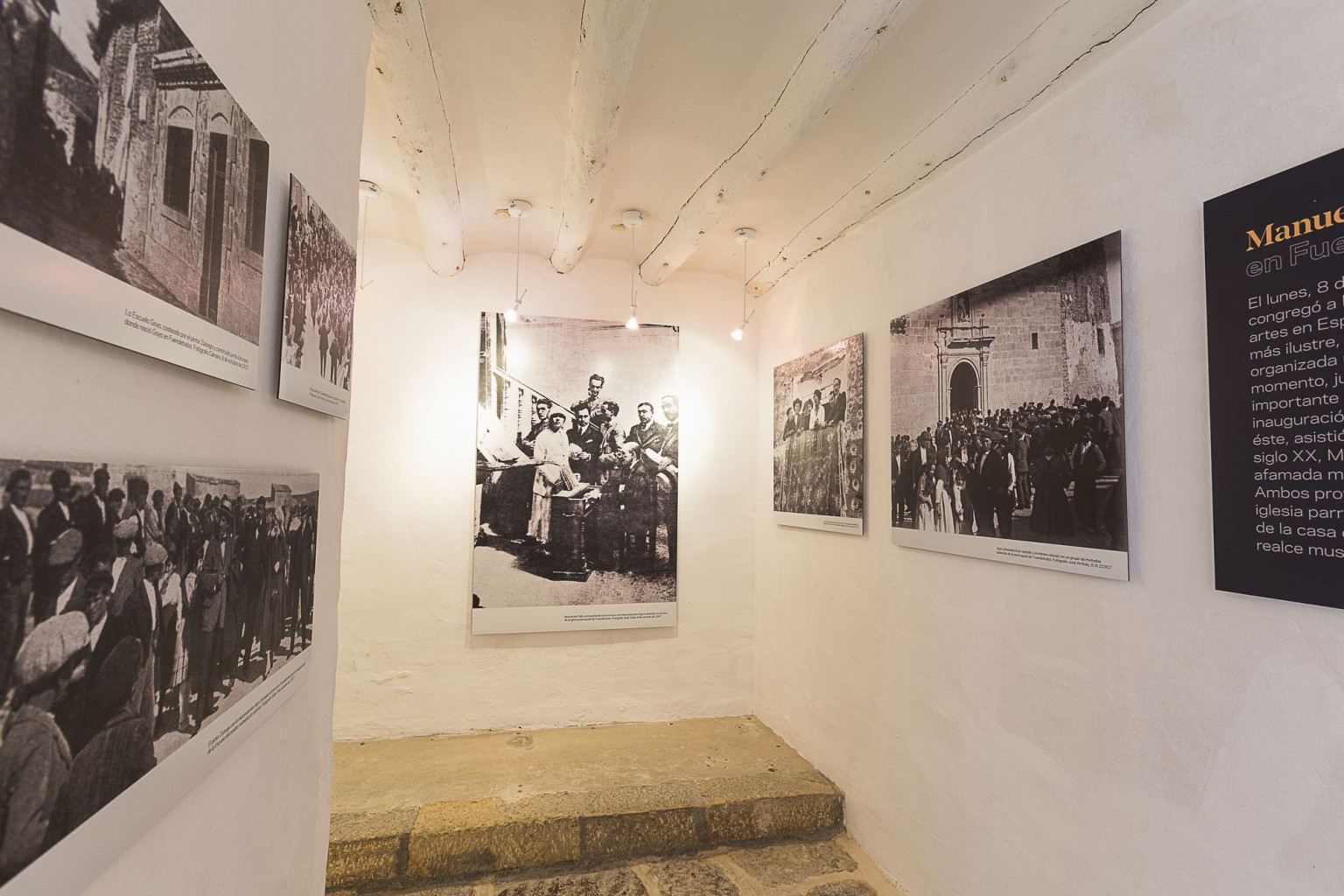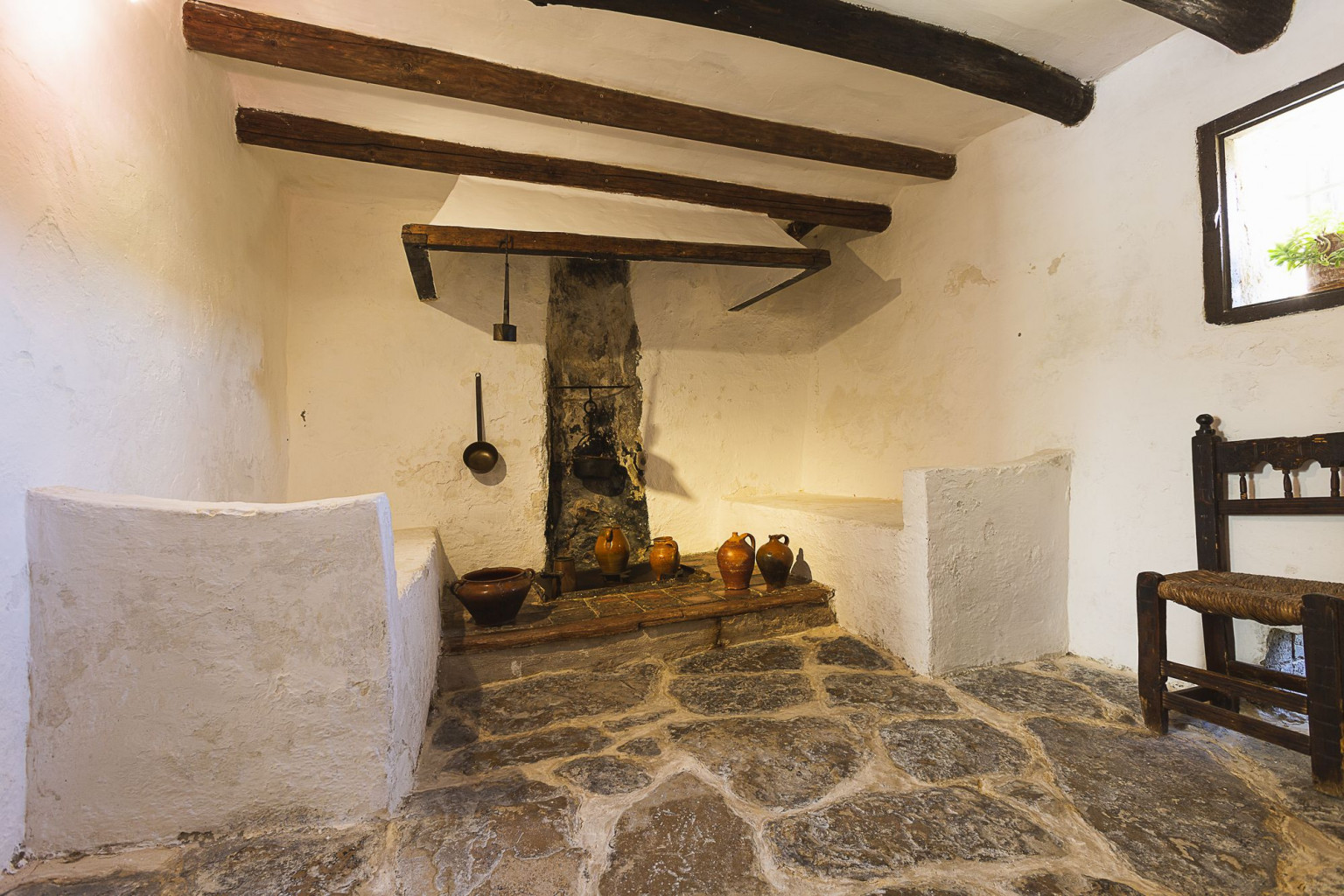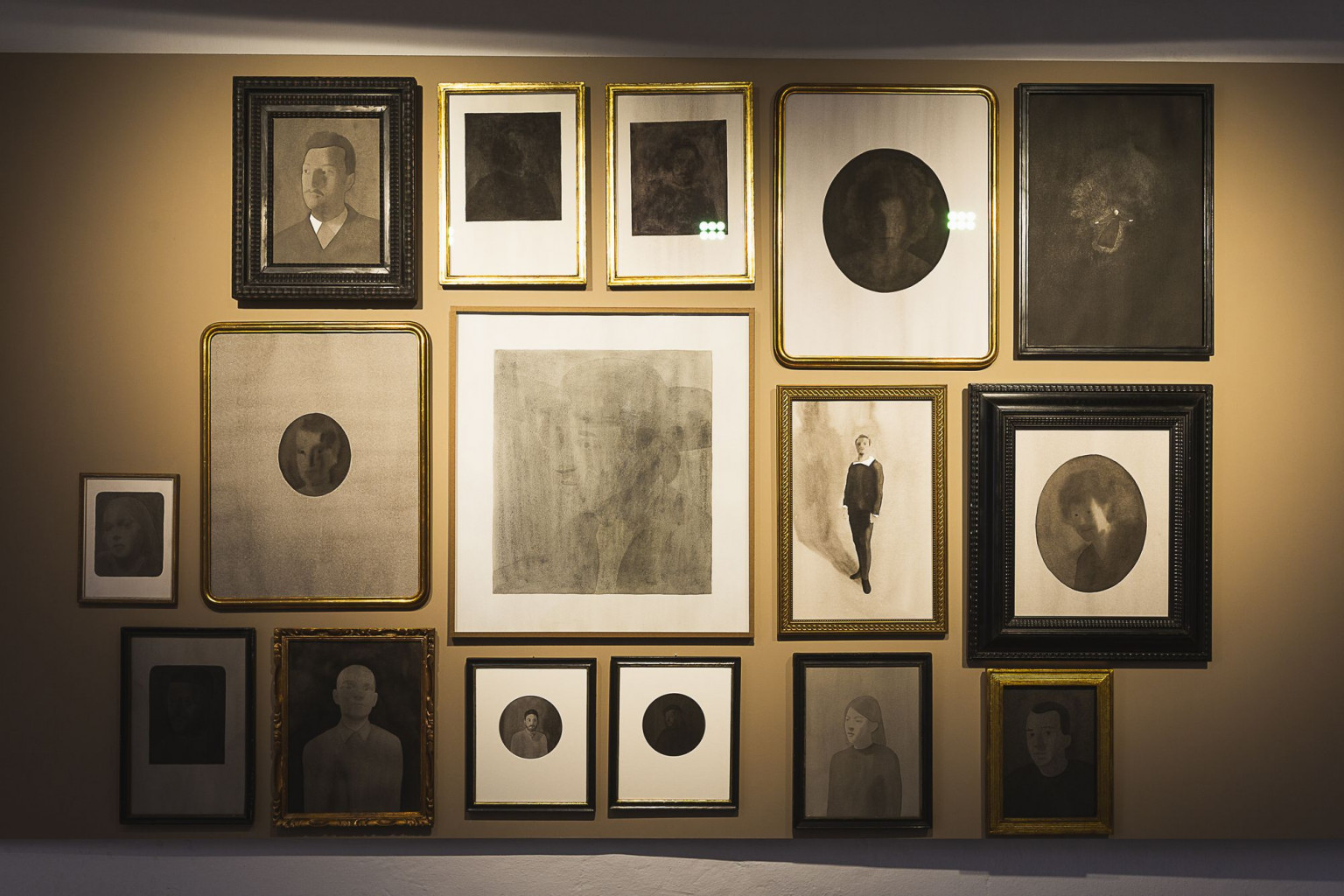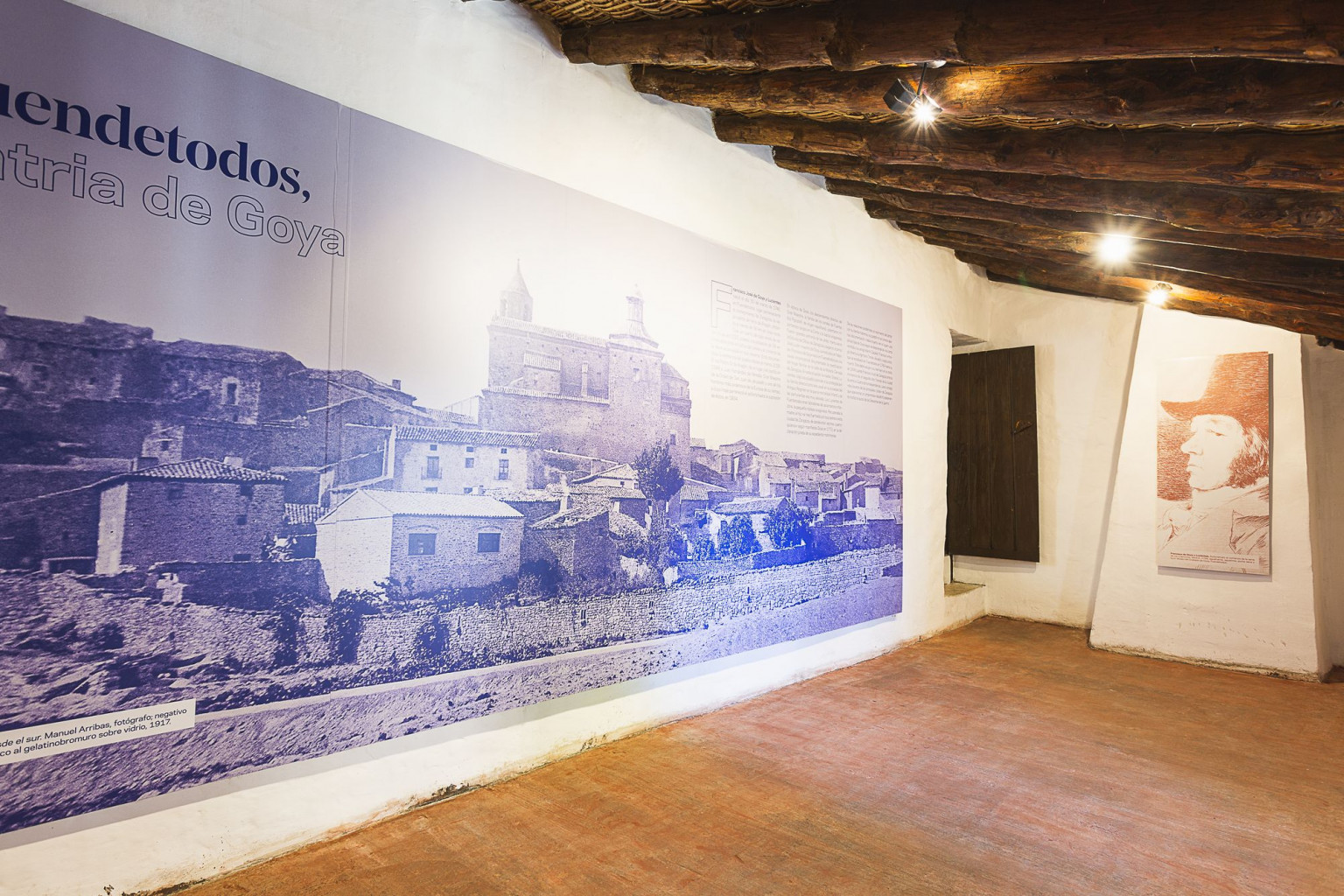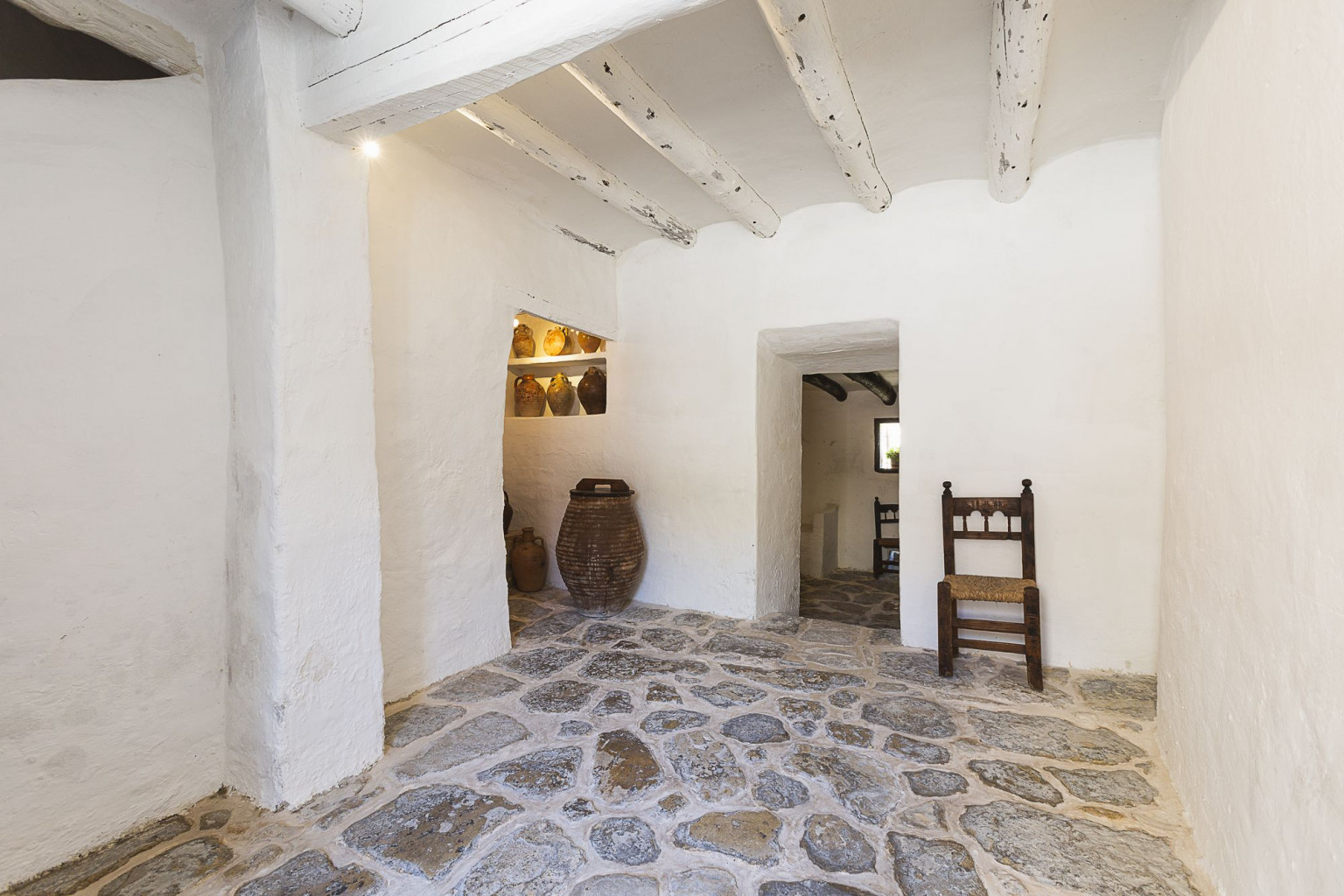GOYA'S BIRTHPLACE
Built at the beginning of the 18th century, this house used to belong to Miguel Lucientes, the brother of the painter's mother, Gracia Lucientes, of noble descent. Soon after they arrived in Fuendetodos, Francisco Jose de Paula was born, on 30 March 1746. Here he spent the first six years of his childhood, whilst his father, Jose Goya, worked on the gilding of the main altarpiece of the parish church. Some years later the family returned to Zaragoza.
After a long time of anonymity and indifference, the house was identified in 1913 by Ignacio Zuloaga and a group of artists from Zaragoza. Zuloaga was a painter who had a good knowledge of the value of symbols and his admiration for the Aragonese painter encouraged him to purchase the house from Benita Aznar Lucientes, one of the painter's grandnieces. However, it did not become really important until, in 1928, when the SIPA (Union of Initiatives and Propaganda of Aragon) set up a Board to celebrate the Centenary of the artist’s death. One of the objectives was to take care of and preserve the house. To do this, it bought the adjacent house, providing free housing for a family that looked after the house where Goya was born and accompanied visitors.
Unfortunately, the Civil War arrived, destroying the two most valuable testimonies in Fuendetodos: The Cabinet of Relics of the parish church and the house where Goya was born, which was partially destroyed and ransacked, so it had to be restored in 1946. The Directorate General of Fine Arts approved the project for a new restoration in 1981. The remodelling work ended in 1985 and it was officially opened on 30 July that same year. By Royal Decree, the House was declared a National Historical Monument in 1982.
The house still preserves all the rustic and popular aspects that it originally had.
The Building
On the inside, the building has all the typical attributes and qualities of a farm worker’s house. It has a ground floor with a hallway, stables and kitchen. A solid stone staircase leads to the upper floor, where there is a lounge and two bedrooms. Finally, there is a granary with a sloping roof. The house has been decorated with typical furniture and utensils of the time, as well as paintings and graphic documentation. It is interesting for travellers, even as a living history lesson, to be able to contemplate a rural environment that genuinely shows the austerity and poverty that existed, characteristics which would later have an effect on the painter’s sober taste.
Horarios: Tuesday to Sunday from 11 to 14 and from 16 to 19 hours
Día de cierre: Friday, excluding holidays. The days 24,25,26 and 31 December and 1 and 2 January
